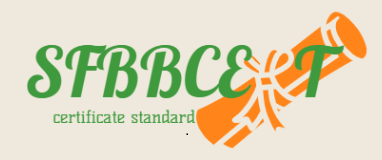
What is Salmonella and How Can It Be Prevented?
Salmonella infection (Salmonellosis) is a bacterial illness that affects the intestines. This bacterium naturally lives in the intestines of humans and animals and is typically transmitted through contaminated water or food and expelled via feces. In fact, Salmonella refers to a group of bacteria that cause food poisoning, usually due to undercooked foods or contamination.
Salmonella is commonly found in the following foods:
Raw meat
Undercooked poultry or turkey
Eggs
Unpasteurized milk
Young children, adults over 65, and people with weakened immune systems are at higher risk of Salmonella poisoning.
How Salmonella Spreads
Salmonella bacteria live in the intestines of many animals. During farming, slaughter, and processing, these bacteria can be transferred to food products. Other foods such as leafy greens and fruits may become contaminated through contact with feces from infected humans or animals. This often happens via manure or sewage entering agricultural water sources.
Some bacteria in food can also spread from pets like cats and dogs to people, or from person to person through poor personal hygiene.
Symptoms of Salmonella Poisoning
Salmonella poisoning, or Salmonellosis, is one of the most common types of foodborne illness. This bacterium is found in raw or undercooked foods such as meat, poultry, eggs, and vegetables.
Symptoms of Salmonella poisoning include:
Diarrhea: Usually watery, sometimes bloody
Fever: Typically above 38°C (100.4°F)
Abdominal cramps and pain: May be severe
Nausea and vomiting: May vary in severity
Headache: Often present with other symptoms
Chills: May occur in some cases
Fatigue and general weakness: Common
Symptoms typically appear 6 to 72 hours after eating contaminated food and last several days to a week. In most cases, the illness resolves on its own without special treatment. However, young children, elderly individuals, and those with weakened immune systems may require medical attention and antibiotics.
To prevent Salmonella poisoning, it’s essential to follow hygiene practices in food preparation and storage, cook foods thoroughly, and wash hands and kitchen surfaces before and after handling raw foods.
Preventing Salmonella Poisoning at Home
You can prevent most foodborne illnesses by practicing hygiene in the following areas:
Proper freezing and storage of food
Observing hygiene and cleanliness
Cooking foods thoroughly
Avoiding cross-contamination
Never drinking untreated water from seas, lakes, or rivers
Always washing your hands with warm water and soap, especially:
Before preparing or eating food
After touching raw food
After using the bathroom
After changing a diaper
After handling garbage
After contact with animals
Salmonella is one of the primary causes of foodborne illness, transmitted through contaminated foods. Good hygiene practices and proper control throughout food production and handling greatly reduce the risk of contamination.
Why Is Controlling Salmonella Important?
Following food safety and hygiene principles based on SFBB (Safer Food, Better Business) standards plays a key role in preventing the spread of bacteria like Salmonella—especially in settings such as restaurants, where hygiene is crucial.
Prevent food poisoning and protect consumer health
Improve the quality and safety of food products
Meet hygiene standards to receive SFBBCERT
Show your commitment to food safety by obtaining SFBBCERT!
SFBBCERT is a certification that confirms compliance with hygiene principles and microbial contamination control standards such as those for Salmonella. By obtaining this certification, you enhance your brand credibility and gain customer trust.

No comment